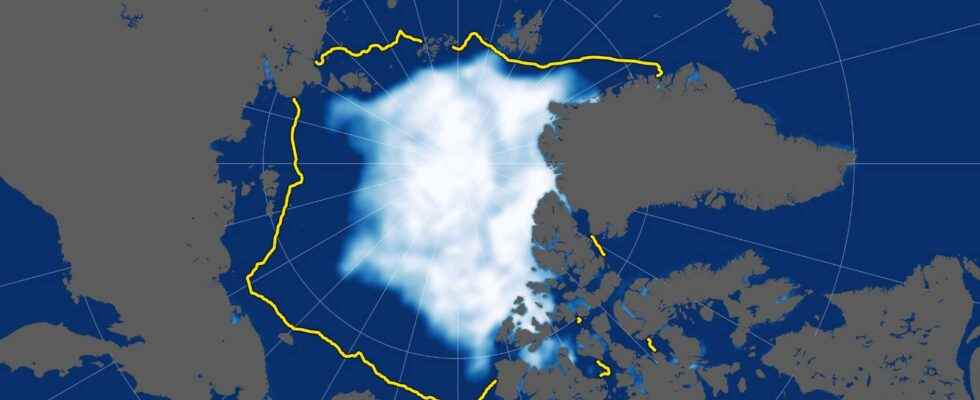In the Arctic, the ice is melting. In the American West, forest fires are getting more and more violent. All because of anthropogenic global warming. Researchers are now showing how the two phenomena are closely linked.
You will also be interested
[EN VIDÉO] Why is the Arctic on fire? Last month, temperatures 8 ° C above normal were recorded in Siberia!
Robert Frost is an American poet. In the predestined name. Because yes, in English, “Frost»Means ” gel“. And it is therefore by evoking the writings of Robert Frost that researchers from Pacific Northwest National Laboratory (United States) introduce their recent work today. “Some think the world will end in the fire . Some think it will end up in the ice. “
But the researchers point out that matterof climate, things are not so binaries . Rather between fire and ice, they envision a kind of give-and-take relationship. In their study, they show that as thesea icebackground in the Arctic , the Sun warms the region a little more which leads to conditions conducive to forest fires in the distant states of California, Washington and Oregon. The existence of this close relationship between the two phenomena was already known. Today, researchers present the mechanism.
“It’s a bit like with the butterfly effect”, comments Hailons Wang,geologist to Pacific Northwest National Laboratory, in one communicated. The one who advances that the beating of wing of a butterfly can trigger a tornadoat the other end of the world. “The Arctic region and the western United States are linked by such a relationship. Warming land and sea surfaces in the Arctic region caused by the loss of sea ice trigger, in the distance, warmer and drier conditions in the western United States later in the year. “
Arctic sea ice is believed to play a major role in worsening forest fires in the western United States. © Pacific Northwest National Laboratory
Less ice, more fires
What is happening exactly is that with the anthropogenic global warming , sea ice in particular, is melting. On the Arctic side, the waters are warming. And the differences ofpressure With l’ atmosphere above the region increase. The whole maintains avortex which rotates over the arctic counterclockwise. A vortex blowing from air hot west of the United States. A vortex so powerful that it manages to bend the polar jet stream. The very one that, in principle, brings humidity to the American coast.
At this point, a second vortex forms. On the United States and turning clockwise, him. As a result, instead of enjoying cool, humid air, the west of the country experiences clear skies and dry conditions. A situation particularly conducive to the outbreak of forest fires. And with global warming continuing, the situation is only expected to get worse.
Since records began in the late 1970s, sea ice cover has been steadily declining in the Arctic. Researchers now even envision ice-free periods before the 2050s. At the same time, theforest fires and mega-firesare increasingly frequent and violent in the western United States. In 2021, no less than 1.2 million hectares went up in smoke in California or Oregon.
Interested in what you just read?
.
fs11
